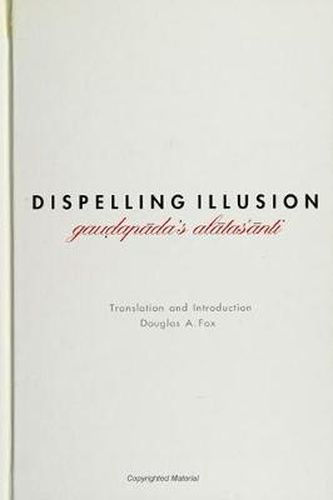Readings Newsletter
Become a Readings Member to make your shopping experience even easier.
Sign in or sign up for free!
You’re not far away from qualifying for FREE standard shipping within Australia
You’ve qualified for FREE standard shipping within Australia
The cart is loading…






This book sets Gaudda in historical context and develops a commentary that makes the meaning and significance of the Alatasaanti text clear. In the Alatasaanti , Gaudda uses terms made familiar by Buddhism in order to expound his Vedantic philosophy. It places him at the watershed between Mahayana Buddhism and Vedanta. Among the important issues discussed are Gaudda’s radical doctrine of non-production (ajati), that is, the view that despite appearances nothing is ever actually brought into existence; his notion of the illusory nature of sensory experience; his conviction that reality is not two (and certainly not more than two); his theory of knowledge; and the touchless yoga he hoped would dispel our illusions about ourselves and our world. His logic and the content of his arguments are examined critically.
$9.00 standard shipping within Australia
FREE standard shipping within Australia for orders over $100.00
Express & International shipping calculated at checkout
This book sets Gaudda in historical context and develops a commentary that makes the meaning and significance of the Alatasaanti text clear. In the Alatasaanti , Gaudda uses terms made familiar by Buddhism in order to expound his Vedantic philosophy. It places him at the watershed between Mahayana Buddhism and Vedanta. Among the important issues discussed are Gaudda’s radical doctrine of non-production (ajati), that is, the view that despite appearances nothing is ever actually brought into existence; his notion of the illusory nature of sensory experience; his conviction that reality is not two (and certainly not more than two); his theory of knowledge; and the touchless yoga he hoped would dispel our illusions about ourselves and our world. His logic and the content of his arguments are examined critically.